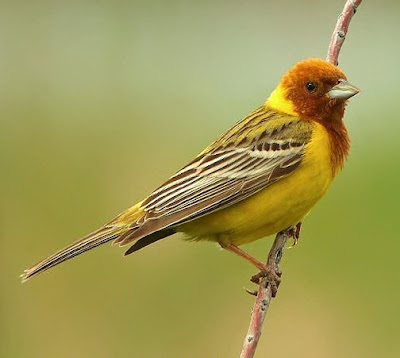Estrilda melanotis
 |
| Photo by Derek Keats (Flickr) |
Common name:
swee waxbill (en); bico-de-lacre-tropical (pt); astrild à joues noires (fr); estrilda ventrigualda (es); grünastrild (de)
Taxonomy:
Order Passeriformes
Family Estrildidae
Range:
This species is patchily distributed in sub-Saharan Africa, mostly along East Africa, from Ethiopia to South Africa, but also in Angola and D.R. Congo.
Size:
They are 9-10 cm long and weigh 6-7 g.
Habitat:
The swee waxbill is mostly found in dry grasslands and scrublands, along forest edges and in pastures, rural gardens and arable land. They are present from sea level up to an altitude of 2.400 m.
Diet:
These birds mainly eat grass seeds, such as catstail grass Sporobolus pyramidalis, Natal redtop Melinis repens and bristle grasses Setaria sp., taken from the ground or directly from plants.
Breeding:
The swee waxbill breeds in December-June. Both sexes build the nest, an oval-shaped structure with a side-top entrance, made of coarse grass and lined with soft grass inflorescences and occasionally moss. The nest is typically placed in scrub or tree 1-5 m above the ground. The female lays 4-5 eggs, which are incubated by both sexes for about 12-14 days. The chicks fed by both parents on a diet of regurgitated seeds and fledge 13-16 days after hatching.
Conservation:
IUCN status - LC (Least Concern)
This species has a relatively large breeding range and is described as common to locally common. The population is suspected to be stable in the absence of evidence for any declines or substantial threats.



















